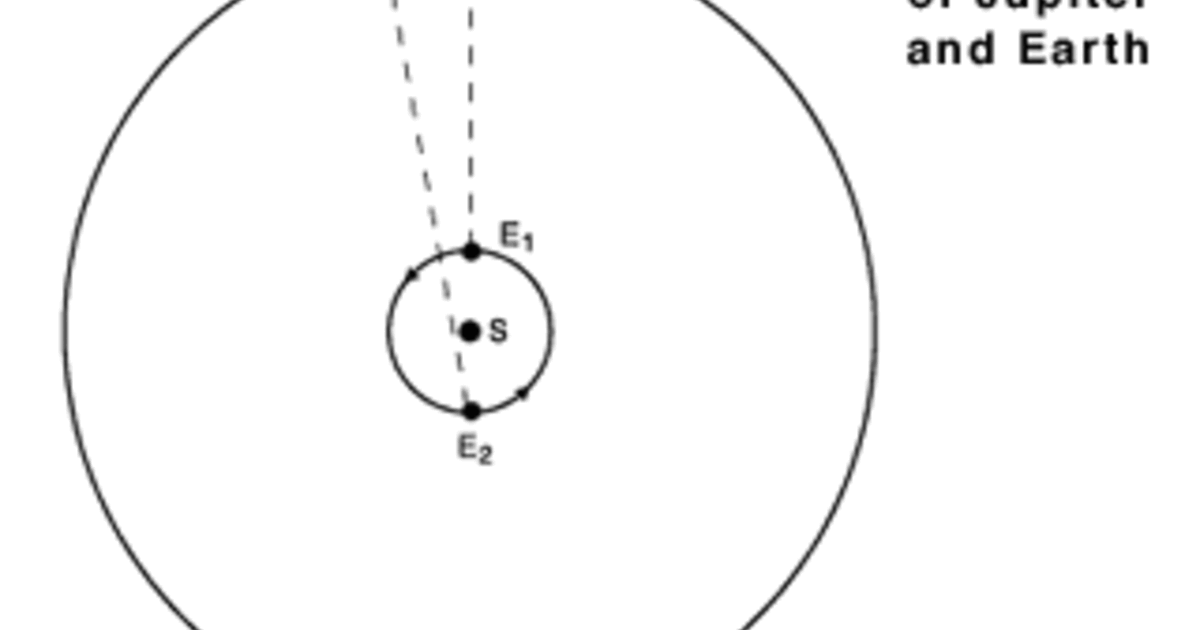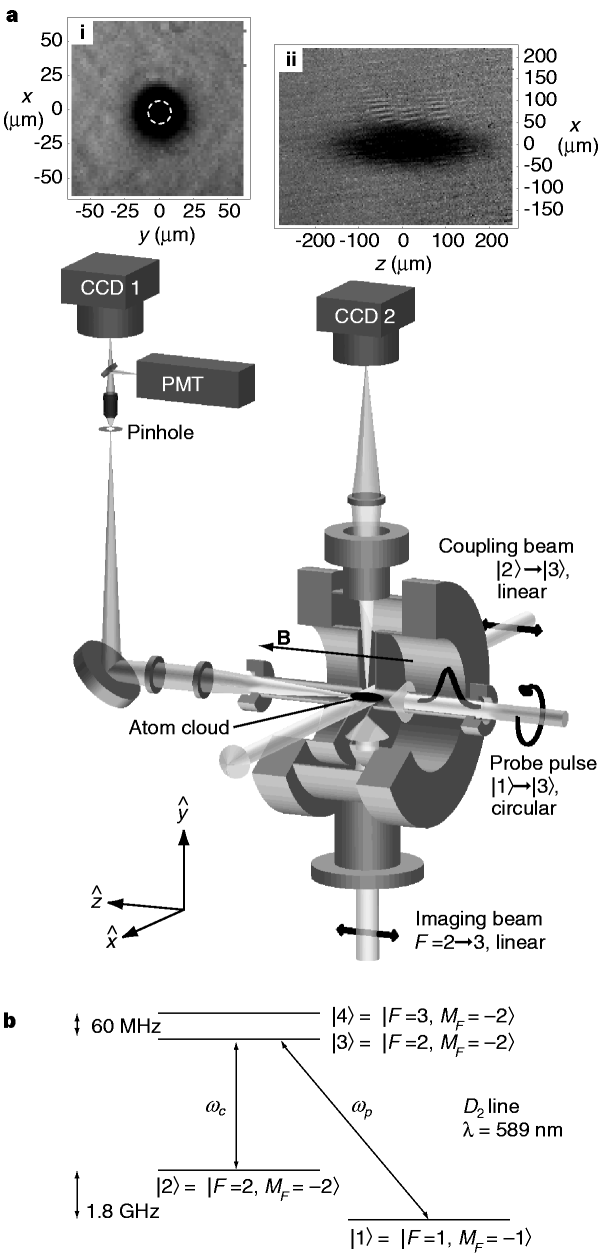Scientists FINALLY Sees What’s Inside B
The enigma of black holes is a topic of endless fascina...
This section introduces the concept of the speed of light and the ways in which it is measured. It will cover the principles of relativity, how light moves through different mediums, and its significance in the modern world.

The speed of light, also known as the universal speed limit, is the measure of the distance light travels in one second. It is the fastest speed that any particle or energy can travel in a vacuum, and it is considered to be an absolute physical constant of nature. The speed of light is denoted with the symbol c and has been measured to be around 299,792,458 meters per second.
The speed of light is so incredibly fast that its effects are used to measure time itself. University laboratories and other scientific institutions around the world use c as the basis for their calculations of nano- and milliseconds due to its accuracy.
Since light travels so quickly, it takes approximately 8 minutes for sunlight to reach earth from the sun’s surface. This means that if you were to stand outside during a solar eclipse, you would be able to witness the moon blocking out the sun before you’d actually realize that it had happened.
Light propagates through space in a straight line at a constant speed, which is why we’re able to detect stars millions of light years away. When we see these stars in the night sky, we are actually looking back in time – we are seeing what they looked like millions of years ago when their light first set off on its journey towards us.
In short, the speed of light is an incredible physical constant and has been used to measure time and distance since ancient times. It is an important factor in many scientific calculations and helps us understand our universe better.

Speed of light is one of the most fundamental constants of physics. It has been the subject of countless studies and theories ever since its discovery more than two centuries ago. The history of speed of light is only slightly less interesting than the science itself.
The first scientific inquiry into the speed of light dates back to 1676, when Danish astronomer Ole Christensen Rømer observed the relative motion of Jupiter’s moons. His observations demonstrated that light travels at a finite speed, and established an approximate value for its velocity.
This initial observation was quickly integrated into existing theories of light; in 1738, Swiss mathematician Leonhard Euler made yet another important contribution by determining that light travels in a straight line. Further breakthroughs by other scientists would soon follow, including those by Dutch physicist Willebrord Snell, who in 1621 determined that the speed of light did not depend on the motion of the observer.
In 1849, French physicist Armand Fizeau focused on the effect of gravity on the speed of light. He designed an experiment that used a rotating mirror to measure the time taken for light to travel from one side to the other and back again. This experiment showed once again that light does not depend on the motion of its source or observer, thus confirming Snell’s earlier theory.
Another important piece of the puzzle was discovered by British physicist James Clerk Maxwell in 1865, who proved that light was an electromagnetic wave. This discovery had an immense impact on the scientific community, as it explained why light travels at a finite speed and seemed to back up Faraday’s Theory of Electromagnetism.
The final piece of the puzzle was revealed in 1905 by Einstein’s Theory of Relativity, which states that time and space fully merge in a four-dimensional space-time continuum. This theory showed that the speed of light is constant no matter what the reference frame is, and established it as one of the fundamental constants in physics.
Today, physicists across the globe continue to investigate the properties of light, as well as aspects related to its speed. While this may never change Einstein’s groundbreaking work on relativity, it provides us with an invaluable insight into how our universe works and gives us yet another window into its mysteries.
The second item in the outline is about properties of the speed of light in a vacuum. It likely contains information about how the speed of light is measured, and what physical constants are associated with it, such as its velocity and wavelength. Other topics in this item could include mathematical equations to calculate the speed of light and how it compares to other forms of energy.

Speed of light is an important physical property in physics, and it is frequently referred to as the speed limit of the universe. Light, which is a form of energy, travels at a constant speed in a vacuum or empty space. This speed is not affected by anything, including the speed of the source, the medium through which it is travelling, or the size of its wavelength.
The exact speed of light has been measured multiple times with very precise instruments, and it has been determined to be 299,792,458 meters per second (m/s). It takes light 8 minutes to travel from the surface of the Sun to Earth. Light from distant stars and galaxies take millions or even billions of years to reach us since they are so far away.
The speed of light is one of the most important properties in the universe because it connects distances between galaxies and helps us measure distances between different astronomical objects. It also plays an important role in Einstein’s Theory of Relativity. According to this theory, any object with mass moves at a slower speed than light.
In general, the speed of light is not impacted by temperature or pressure. However, it can be slowed down when it passes through certain materials like glass, water, or oil. This phenomenon is known as refraction and it affects the way light travels through these substances.
Finally, a practical example of the speed of light can be seen with lasers. Laser beams travel at the same speed of light, and are used for various purposes such as measuring distances, medical treatments, detecting objects in space, and more.
In conclusion, the speed of light is an important knowledge in physics. It travels at a constant speed in vacuum and its speed can be affected by certain materials like glass, water or oil. The speed of light has various applications in everyday life and its importance for astronomy can’t be overstated.
Speed of light is the fastest speed in the universe. It is renowned for its ability to pass through vacuum without any energy loss. In other words, it is a constant speed that never decreases or increases. This unique property of light is explained by mathematical theories and principles.
The first law governing the speed of light is the Principle of Relativity. According to this principle, speed of light remains the same from all frames of reference, regardless of the motion of the observer. This means that when two observers are traveling away from each other at a speed close to the speed of light, they will both measure the speed of light to remain constant.
The second major property of light that is described mathematically is its wave-particle duality. This means that light exhibits both wave-like and particle-like properties. Wave-particle duality provides a complete description about the physical behavior of light and explains why it travels faster than other objects.
Another important mathematical property of light is its refractive index. Refractive index is a measure of how much light bends as it travels in a medium. If the refractive index is high, then light will bend more in the medium and travel slower. Likewise, if the refractive index is low, then light will travel faster and have less bending in the medium.
Finally, light’s behavior in vacuum can be described mathematically using the principle of conservation of energy. According to this principle, energy cannot be created or destroyed and is only transferred between forms. As a result, light always travels at the same speed regardless of the medium or any external forces acting upon it.
In conclusion, light exhibits several mathematical properties that explain how it behaves and travels in various mediums. The mathematical properties governing the speed of light include relativity, wave-particle duality, refractive index, and conservation of energy. These principles help scientists understand how light moves and why it has such special properties.
A. Astronomy
B. Navigation
C. Communication
D. Synchrotron radiation
E. Particle acceleration
F. Relativity studies

Speed of light is one of the most mysterious physical constants that has been difficult to measure and understand. Scientists have been studying it for centuries, but there have been no definitive answers as to why it exists or how it works. Despite this, the speed of light has a number of scientific applications, which can be useful in a variety of fields.
One of the most widely used applications of the speed of light is in the field of physics. Specifically, the speed of light helps scientists understand the behavior of matter and energy and how they interact with one another. This is because the speed of light is inextricably linked to other physical processes. For instance,Albert Einstein’s Theory of Relativity states that the speed of light is the same in all inertial frames of reference, meaning that an observer on Earth will always measure the same speed regardless of how fast they are moving. This theory laid the foundation for many important discoveries in astrophysics and other scientific fields.
The speed of light also has implications for astronomy and cosmology. Its speed can be used to calculate distances between stars and galaxies, as well as determine how much time it takes for light from these objects to reach Earth. This knowledge can be used to better understand the universe and its structure. Similarly, the speed of light can help scientists measure the age of the universe, as well as provide insight into its expansion rate.
The speed of light also plays an important role in quantum mechanics, particularly quantum communication and computing. Since quantum particles can travel at speeds faster than light, they can be used to send information between two points quickly and securely. Additionally, quantum computers are able to process large amounts of data at incredibly high speeds due to the fact that they use subatomic particles instead of traditional transistors.
Finally, the speed of light is an important factor in telecommunications. It allows scientists to determine what type of technology should be used for different types of data transfer. For example, fiber optics uses light pulses to transmit data at incredible speeds, making it ideal for large-scale data transfers such as video streaming or downloading large files.
In conclusion, the speed of light is an important scientific constant with numerous applications across a variety of fields. From astrophysics and astronomy to quantum mechanics and telecommunications, its use can help us better understand our universe and unlock new possibilities in science and technology.
The speed of light is one of the most important and fundamental forces in the universe. Its nearly instantaneous travel has allowed us to explore distant galaxies and calculate the age of the universe. As impressive as this may be, the speed of light also has many everyday uses that are often taken for granted.
One of the most common everyday applications of the speed of light is in communication. Technologies such as radio, television, cell phones, and the internet all rely on light to send signals across vast distances in the blink of an eye. Without the speed of light, we would be unable to access these technologies or communicate with people over large distances.
In addition to communication, the speed of light is also used for various imaging technologies. These include X-rays, MRI scans, and CT scans, which use light to create detailed images of the internal structures of our bodies. This allows doctors to quickly diagnose and treat illnesses before they become serious.
The speed of light also plays a role in navigation. Global Positioning Systems (GPS) use light from satellites to accurately calculate the location of a person or object on Earth. This technology has revolutionized navigation by making it easier than ever to figure out where you are going and how to get there.
Finally, the speed of light is even used to measure time. Atomic clocks are extremely precise instruments that measure time using electromagnetic radiation, such as light waves. They have become so accurate that they are now used as the official measure of time for most countries around the world.
As this article has demonstrated, the speed of light has countless applications that make life easier and more convenient for us every day. From communication to navigation, it is clear that this force is essential for modern life as we know it.
A. Shortage of Resources:
1. Inadequate Funding
2. Limited Technical Expertise
B. Environmental Factors:
1. Atmospheric Disturbances
2. Interference from Waves
C. Physical Limitations:
1. Attenuation of Signals
2. Distance Limitations
D. Future Solutions:
1. Alternative Signal Transmission Methods
2. More Efficient Network Architecture

The speed of light, sometimes referred to as the ultimate speed limit, is one of science’s most extraordinary phenomena. It is considered to be the maximum speed at which all forms of energy and matter can travel through space. Light travels as a wave, and its speed is determined by the type of medium it is traveling through. This speed is essentially constant throughout all of space, regardless of the source or observer’s motion.
Though the speed of light appears to be an unlimited source of energy, there are actually some limitations to its speed. These limitations are determined by various factors, including the medium in which light is travelling, the strength of its source, and the location and energy levels of the observer.
For instance, if light is travelling through a vacuum or an atmosphere with no particles, then its speed is significantly higher than it would be if it were travelling through a solid or liquid. This is because particles act as obstacles to the waves of light, slowing them down. Additionally, thick clouds or fog will also reduce the speed of light significantly.
Another potential limitation to the speed of light is the strength and source of the light being emitted. For example, lasers have been shown to travel slightly faster than normal light, though not significantly. On the other hand, natural sources of light, such as starlight or sunlight, are unable to exceed the speed of light in a vacuum.
Finally, an observer’s location and energy level can also affect the speed of light. If an observer is located close to the source of light or in a region with particularly high levels of energy, then they are more likely to observe a faster speed of light than they would elsewhere in space. This could be due to their proximity to the source, or increased energy levels helping boost the wave velocity of the light itself.
In summary, while the speed of light appears to be an unlimited source of energy, it is subject to certain limitations. Factors such as medium and source strength can influence this speed significantly, while location and energy levels can also have a small but measurable impact on how quickly light travels.
The speed of light is one of the most important constants in physics and has remained constant since its first measurement. Despite its immense importance, scientists are still trying to understand the nature of the speed of light and possible ways to break this universal speed limit. Here are some of the proposed solutions for breaking the speed of light and their implications.
The first proposed solution was to create a form of an exhaust drive. This drive would be able to propel a craft beyond the speed of light by using an exhaust-like structure of intense magnetism that would attract particles from interstellar medium towards the drive. While this process could work in theory, its practicality is still unknown and it’s not yet possible to create a powerful enough magnetic field for this to happen.
Another proposed solution was wormhole tunnels. Wormholes are a theoretical construct intended to explain how two distant points in space-time can be connected by such tunnels. Within a wormhole tunnel, the speed of light would be increased, allowing a craft to reach otherwise unthinkable speeds of up to 10 times the speed of light. However, while this could theoretically work, the immense amounts of energy and matter required to create a wormhole tunnel make it highly unlikely that we’d ever be able to construct one.
A third potential solution would involve manipulating space-time, which is a concept still being explored by scientists. By manipulating spacetime in the right way, it may be possible to create time-dilations and thus allowing objects to travel faster than the speed of light. Understandably, this concept is very difficult to comprehend and is far from proven as a reliable means of travelling beyond the speed of light.
Finally, there also exists the concept of “superluminal” motion, which has never been proven but suggests that particles can exceed the speed of light under certain specific circumstances. Generally speaking, this idea has been largely discounted by scientists due to the fact that it conflicts with various other laws of physics, so it remains more theoretically than practically viable as a means of breaking the speed of light at this point.
In conclusion, while there have been numerous proposed solutions for breaking the speed of light, none have been proven or developed enough to actually make them practical or even reliable means of doing so. Scientists are still working hard to find new solutions and push the boundaries on weird and wonderful theories when it comes to breaking this universal speed limit, so it’s undoubtedly an exciting time for science enthusiasts!
In conclusion, the speed of light is an astonishingly fast phenomenon, which has been studied carefully by scientists in recent centuries. It can travel vast distances in the blink of an eye, and its influence on physics and other sciences is undeniable. Furthermore, due to the properties of light, it is considered to be one of the fundamental constants of the universe.

Speed of light, also known as the luminous velocity, is the speed at which electromagnetic radiation travels in a vacuum. It is often denoted by the letter “c” and is equal to 299,792,458 meters per second, or approximately 3.00 × 10⁸ m/s. The speed of light is the fastest velocity at which energy can travel through space.
The speed of light was first measured by Dutch scientist Christiaan Huygens in the 17th century using a beam of light projected through two slits. He found that the speed of light was the same regardless of how far apart the slits were placed. In the 19th century, James Clerk Maxwell was able to explain the behavior of light by theorizing that it was composed of electromagnetic waves.
Albert Einstein’s theory of special relativity describes how the speed of light is a constant for all observers regardless of their frame of reference. This means that if one observer is moving away from another observer at a significant fraction of the speed of light, then each observer will measure the speed of light as being equal to c. This effect is known as time dilation, because time passes more slowly for the observer who is moving faster.
As an example of the speed of light, consider a beam of light traveling from Earth to the moon. This beam of light will take approximately 1.3 seconds to reach its destination. That’s incredibly fast! To put it into perspective, if you were to stand on Earth and someone else was standing on the moon, it would take you approximately 6.5 minutes to reach them if you were both traveling at the speed of light!
In conclusion, the speed of light is an incredibly important part of our universe and is the foundational concept for understanding many other physical phenomena. It is one of the most important constants in physics and is fundamental to understanding concepts like relativity and quantum mechanics.

Speed of light is one of the most important physical constants in our universe. Ever since Einstein postulated his special theory of relativity, scientists have known that nothing can travel faster than light. This has a wide range of implications for physics, astronomy and even everyday life.
First, we know from Einstein’s equations that the speed of light is a universal constant, no matter the reference frame it is measured in. That means that all observers should measure the same speed of light regardless of their motion relative to one another. Since this has been experimentally verified, it forms the basis of Einstein’s special relativity, which predicts that time dilation and length contraction should occur when two observers are at different velocities relative to each other. This has important implications for our understanding of space and time, since it tells us that these coordinates depend on the observer’s frame of reference.
The speed of light also has implications for the structure of our universe. Since its speed is constant, it places an upper limit on how quickly any information can travel from one point to another. This means that light emitted from a distant object billions of years ago is only now being observed here on Earth. This allows us to “look back in time” to observe the distant past, giving us an unprecedented insight into the early history of our universe.
Of course, the speed of light is also important for everyday life. For example, communication satellites orbit Earth at speeds close to the speed of light. This means that information such as TV signals can be sent and received almost instantaneously, making global communication possible. It also plays a part in GPS technology, as the signals from GPS satellites must travel at near light speed in order to accurately calculate a location on Earth.
In summary, the speed of light is an important physical constant with far-reaching implications for space, time and our everyday lives. Its constant speed places an upper limit on how quickly information can travel through our universe, allowing us to observe its distant past and reap the benefits of modern technology like satellite TV and GPS.
You cannot copy content of this page